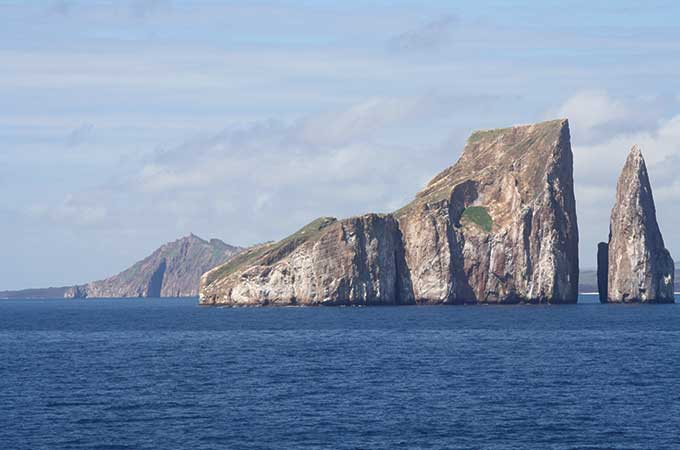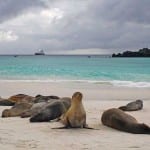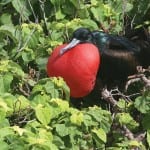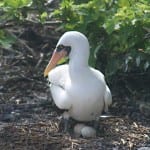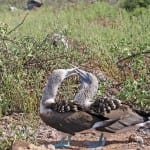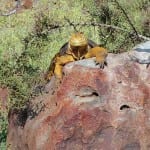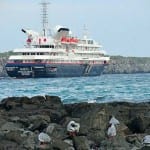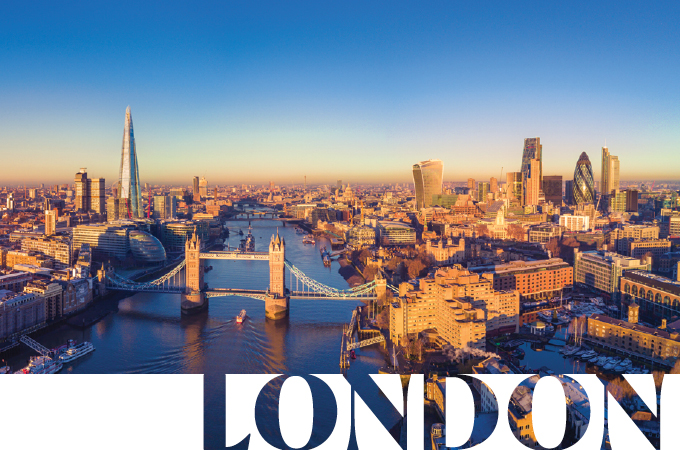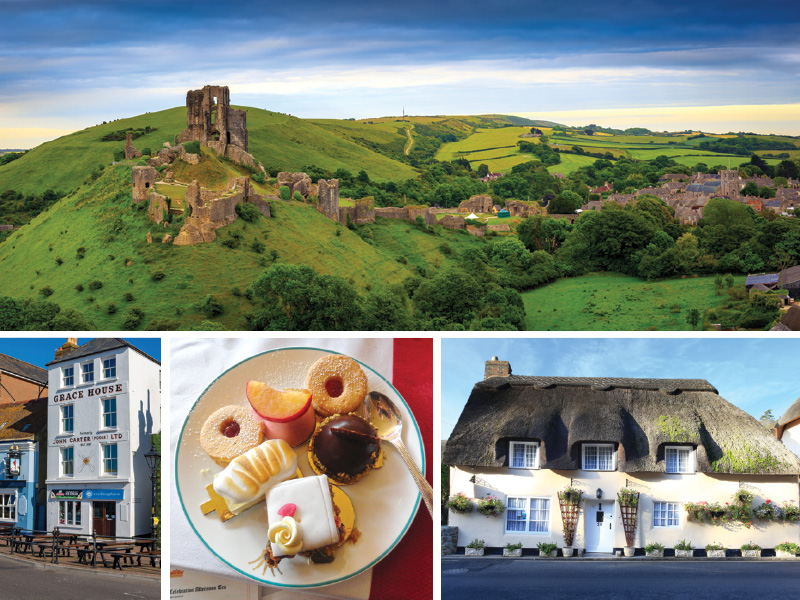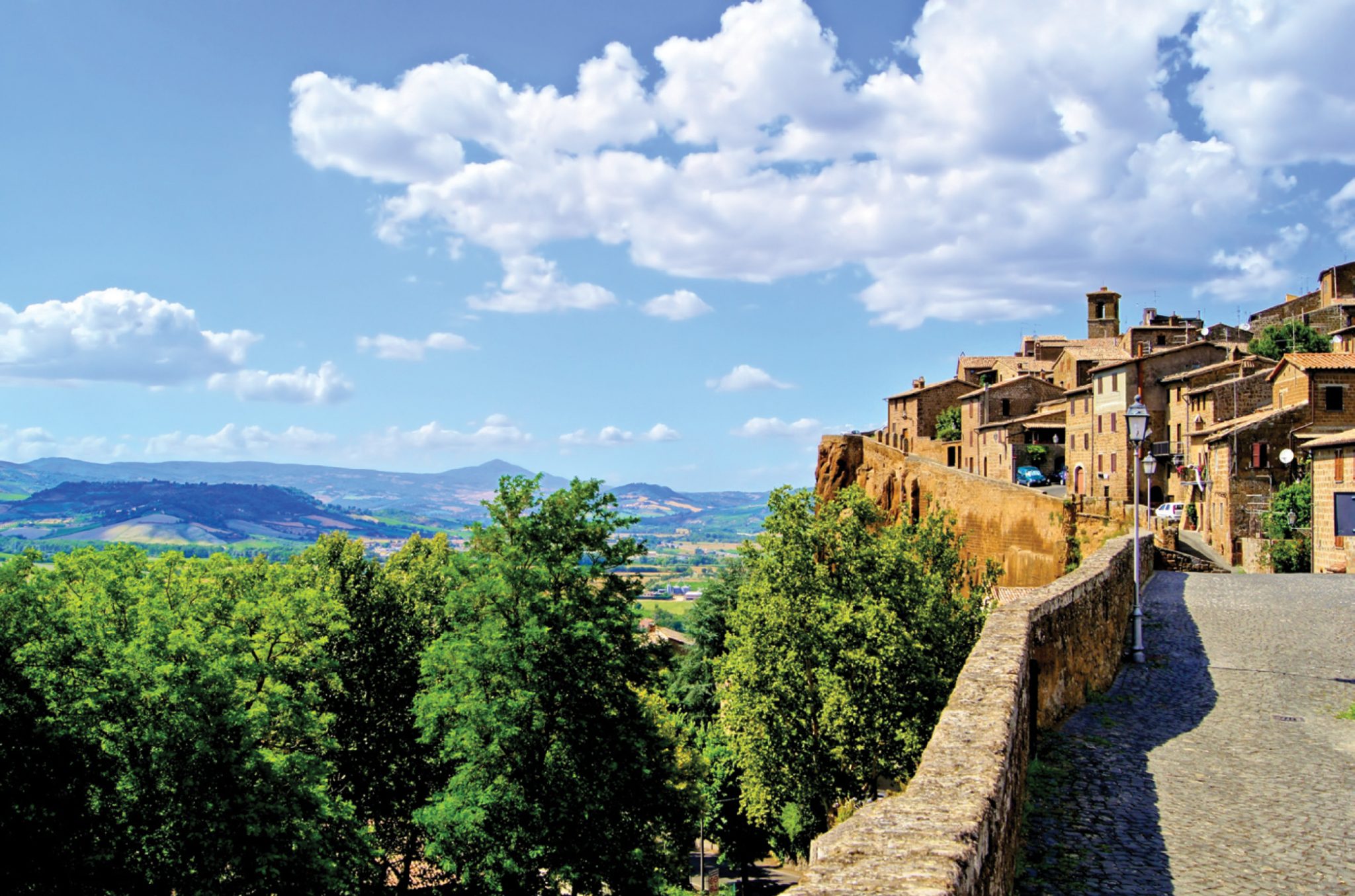It’s hard to describe the sensation of being on an island where birds don’t fly away as you pass them. Or sea lion pups ignore you. Much like being dropped in the center of the Garden of Eden, landing in the Galapagos Islands is surreal—it challenges everything you have ever experienced of creatures in nature, especially the fear of man.
But then that is the allure of the Galapagos, an archipelago 600 miles off mainland Ecuador: The animals go about their business, and human visitors go about theirs. And while I wouldn’t exactly say ‘never the twain shall meet,’ the meeting is uneventful—for the animals anyway. But for humans, a trip to the Galapagos is a peak experience, a window into a very different time and place. It is where you can witness the same phenomena Charles Darwin did nearly two centuries earlier, an experience that prompted his notions about natural selection and survival of the fittest. You’ll see which mate a blue-footed booby female chooses—and learn why. And you’ll watch a lava lizard do ‘push-ups’ to mark his territory and a marine iguana ‘blow his nose’ to excrete saltwater.
When first setting foot on the islands, I distinctly remember thinking, I am seeing something utterly remarkable here: how life evolved on this planet! Our home for a week was the Silver Galapagos, a luxury expedition ship in the Silversea fleet. And while we were turning into amateur naturalists at each island, the ship was providing wonderful accommodations, amazing meals and onboard experts to guide us around the various islands. Ninety-seven percent of the Galapagos is designated a national park, and visitors must be accompanied by a guide. Only four of the 14-plus islands are inhabited.
Our first day is spent hiking the volcanic rocks of the northernmost outpost in the archipelago, Genovesa. It is uninhabited by humans, but brimming with boobies, frigate birds, petrels, mockingbirds and other marine fowl. The terrain is peculiar, a jagged shoreline and crude walking paths of lava rock that challenge even the best lug-soled shoes. But as soon as we land there—after being ferried from the cruise ship by large inflatables called Zodiacs—we understand how unique this entire region is.
You would think that when 36 humans descend onto a deserted island, the birds nesting all around might take notice: fly away, flutter their wings, squawk, something. But no, we get within inches of them. There are frigate birds puffing up their red wattles to attract mates—hundreds of them. And red-footed boobies, so named because even in Darwin’s time, they didn’t react to the presence of human invaders, causing Spanish sailors to call them bobos, or idiots.
We watch in amazement as the frigate birds attack hapless boobies in mid-air to steal the fish they had worked so hard to dive and secure (that’s called cleptoparasitism, our guide tells us); and we see one lucky male secure a mate and wrap his wing around her to let the others know she’s taken. This island of only 10 square miles has 140,000 birds, and as home to a colony of frigates, the landscape is a sea of red balloons (puffed pouches) between March and May.
After two hours of hiking Genovesa, it is time for deep water snorkeling, with the possibility of seeing white-tipped sharks, fur seals, marine iguanas, manta rays, sea lions and hammerhead sharks. Of course there is the usual colorful array too— parrotfish, bacalao, baloonfish and puffers.
One would think all this is enough excitement for one day, but no, this is a continent of siesta, and midday is just break time—a rest between activities, not an end to them. For us 70 lucky Silversea cruisers, it means time for a leisurely lunch onboard, and that lunch includes things like octopus ceviche, grilled lobster and fig pie. Meals can be taken on-deck, overlooking the unspoiled shoreline of these remote islands, leaving no doubt about why passing sailors dubbed them ‘Islas Encantadas’ (the Enchanted Ones). Around 4 p.m., it’s time for the afternoon activity, which blessedly is less rigorous than our very full morning was. A two-hour stroll around Darwin Bay adds red crabs and sea lions to our wildlife encounters.
New day, new island. After our glorious first day of frigate birds and boobies, it’s hard to believe there are additional wonders to be discovered. In fact, we’d become so inured to the sights, we took to joking, Not another friggin’ frigatebird! But the next island, North Seymour, has its own marvels. At 2 million years, it is one of the older islands here. The Galapagos is an example of ‘a hotspot island chain,’ like the Hawaiian archipelago. Our ship’s guest lecturer, biologist Kara Weller (who offers a daily talk), explains that the islands are the result of underwater volcanic activity, and that over millions of years, the eastern islands will die and new ones will crop up on the western side, starting the entire Galapagos life cycle all over.
We witness the beginning of that cycle when we disembark at a ‘very young lava flow’ the afternoon of day two. The terrain is pitch black and quite uneven, resembling twisted black licorice. Our guide, Martin, explains that in 1897, This island’s volcano erupted, spilling the molten rock, called pahoehoe. Since then, very little has taken root, but he points out some nascent cacti and tiny red-stalked portulaca, a tender succulent popping up occasionally between the black lava plates. Some day birds will stop at the island to peck at the plants, and maybe they’ll carry seeds here from the mainland—on their wings or feet or in their droppings. That will establish new life forms on the island, which in turn will be able to sustain other animals, like land iguanas. Having those here will make it an attractive stop for the Galapagos hawk and short-eared owl wanting a tasty lunch of lizard. And that’s how life will take hold anew.
Of course, the Galapagos were immortalized by Darwin, who developed his then-revolutionary theories about natural selection after a five-week visit in 1835. Our ship’s naturalists applied the concepts liberally during our weeklong tour, starting with frigate birds. “In nature, size matters,” says Veronica, who like all members of the crew and guiding staff must be Ecuadorian by law, thanks to the highly regulated Galapagos tourism. “The more impressive the male’s puffed-up red wattle, the more likely a female will choose to mate with him.” Same for the blue-footed boobie. “The bluer a male’s feet, the more likely he is to be getting plenty of food—which means he’ll be a good provider for the female and her chicks.”
As the week progresses, each island the Silver Galapagos visits unfolds its wonders: lava lizards, opuntia cactus, manta rays, sea lions, fur seals, palo santos trees, giant tortoises, sea turtles, penguins (yes, penguins at the equator!), starfish, bright Sally Lightfoot crabs and more. There’s no doubt in my mind that every passenger left this trip with a similar feeling: exhilaration over glimpsing Darwin’s natural selection at work, and the realization of just how rare this opportunity is in our 21st-century world. It’s not every day that humans get to see a Nazca booby regurgitating food into her chick’s open mouth or witness the 24 steps of the albatross mating dance. Another friggin’ frigate bird, indeed.
[if you go: tips]
Do Your Research.
There are only two seasons: garua, the cool and dry time from May to December, and the warm season of December to May. You will see different mating rituals and even animals depending on when you go. For example, the best whale-watching (humpbacks) is during the cold season, and turtle nesting happens in warm season.
Prepare.
Seeing what’s under the water here is a big part of the experience. Take a snorkeling lesson in advance if you are at all uncomfortable, and maybe buy your own mask.
Pack Right.
Take only ‘quick dry’ clothing and always bring long sleeves on your hikes; the sun is bright, and you won’t want skin to be exposed (although temps routinely hover between 78 and 83 degrees). Sleeves are also better protection if you encounter mosquitoes. And bring doubles of anything that is indispensable.
The Top 10.
Sun hat, waterproof sunscreen, water shoes, sneakers/hiking boots, quick dry socks, mosquito repellant, two swimsuits, croakies (sunglass guard), SPF lip balm, waterproof camera.
Choose Carefully.
This is a big trip—even though Quito is only about five hours from Miami. Choose your cruise line with care, as it will greatly impact your experience. The better cruises have the most highly ranked guides and will make all the arrangements to get you from home to Ecuador, to the Galapagos and back, stress-free.
Photos: Marc Weiner





